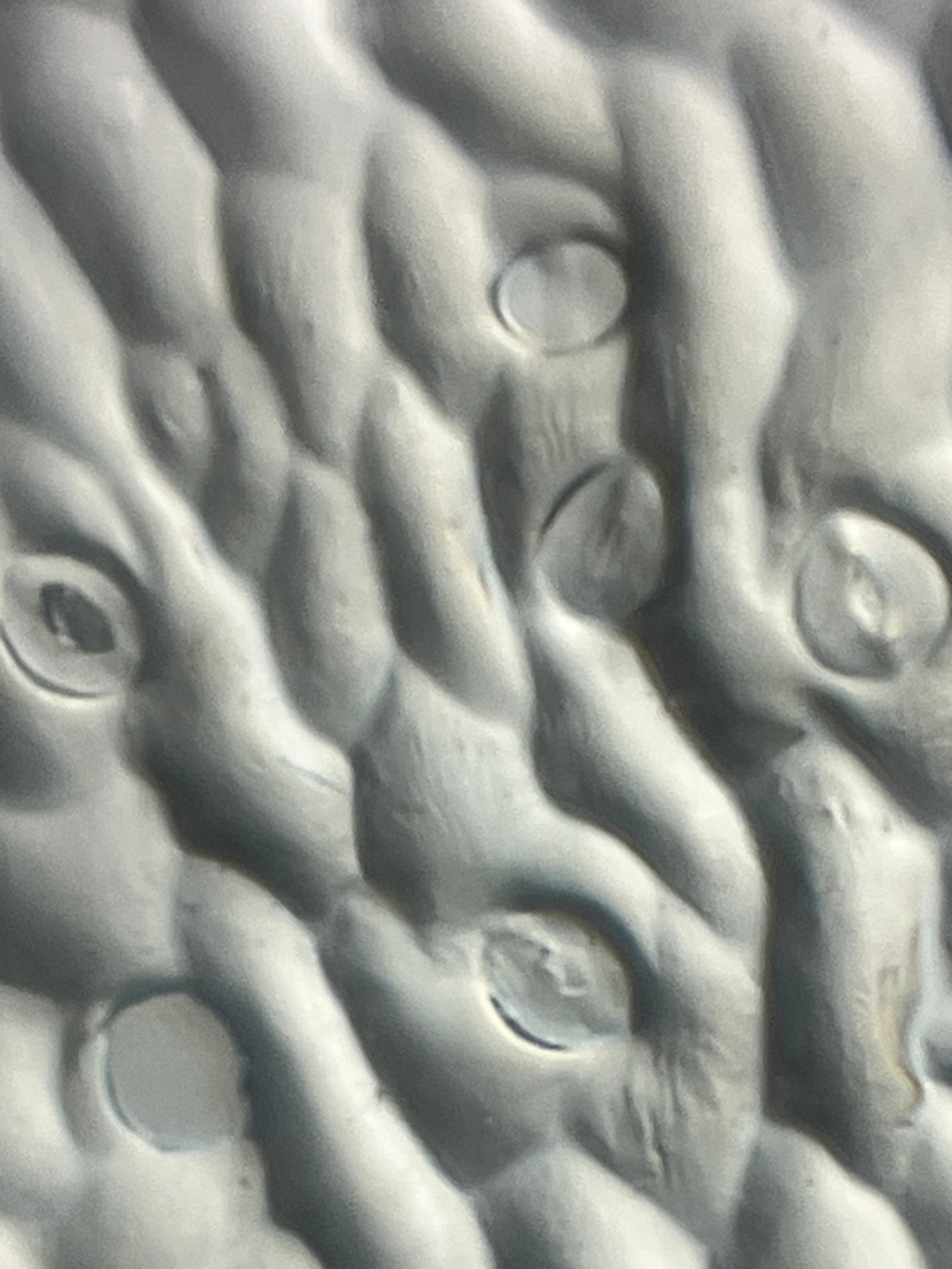Question:
What is hiding in your water?
During the hot summer months it is easy to see the process of evaporation with water. For example, after it rains, the water puddles on the sidewalk will slowly start to disappear. Sometimes when this happens, you can see a white ring remaining on the sidewalk where the water once stood. Can we observe materials hiding in the water on a microscopic level? Let’s answer this question as we take a closer look at evaporation with our Foldscopes!

Background:
Where does the water go?
There are three states of matter: solid, liquid, and gas. When a liquid gets hot enough, it changes into a gas. This is evaporation. Water vapor is an invisible gas, so as the water evaporates it looks like the water is disappearing. It is still there, but we can’t see it as it floats around us.
What got left behind?
Water is a liquid that can dissolve solids like salt. When salt dissolves in water, the solution is clear. The salt is still there, but we can’t see it while it is in the water. As the liquid water evaporates and turns into water vapor, the salt particles crystallize and fall out of solution, revealing what was once hidden.

Materials/Procedure:
This is an activity that can be performed outside. The hot summer sun will increase the rate of evaporation and allow for students to investigate multiple slides in one sitting. And as a bonus, Foldscopes are great tools to take outdoors!
- Materials:
- Science notebook
- Pen/pencil
- Salt
- Baking Soda
- Water
- Small Eppendorf tube from your Foldscope Kit
- Pipette
- Small scoopula
- Foldscope
- Glass Slides (or Paper Slides)
- Ring Stickers
Procedure
- Use the scoopula to place a small amount of salt in the Eppendorf tube.
- Add water to fill the tube.
- Close the tube and shake it vigorously until all of the salt dissolves in the water.
- Open the tube and use the pipette to draw out the liquid.
- Place a ring sticker on a slide, peel off the cover, place a few drops of liquid from the pipette into the ring sticker.
- Set the slide in a sunny place to let the water evaporate.
- Repeat steps 1-7 with the baking soda.
- When all of the water has evaporated from the slides, replace the cover stickers.
- Place the slides in your Foldscope and observe the remaining solid material.
- Are the salt and baking soda crystals the same size and shape?
- How would you describe the different sizes and shapes of the crystals?
- Draw the crystals you observed in your science notebook along with your answers to the above questions.

What other water sources could you study to search for “hidden” materials? What could seeing the hidden materials in water tell you about the environment?

Real World Scientist:
Victoria Kelly is the Manager of the Environmental Monitoring Program at the Cary Institute of Ecosystem Studies. She has a Master’s degree in Ecology and Systematic Biology and studies the effects of road salt (used in the winter months for de-icing roads and highways) on groundwater systems. The group that Kelly works with at the Cary Institute investigates what happens when road salt dissolves in the water and gets into our waterways. Kelly collects data that is used by states to help them reduce their use of salt and improve the health of freshwater systems. How can your observations from this activity contribute to their work?
Real World Artist:
Tania Kovats is an artist and professor at the University of Dundee in the United Kingdom. Kovats believes that art is a way of communicating and she successfully demonstrated the intersection of art, science, and environmental awareness through her 2015 art exhibition called Evaporation. She placed salt water in large steel bowls and let it slowly evaporate. The resulting patterns of salt crystal rings were both unique and beautiful. How can your observations from this activity be used to create art like hers?

Extension:
This blog ties together the three dimensional framework of the NGSS. It covers the Disciplinary Core Idea of Physical Science. Students will see the Crosscutting Concept of Energy and Matter. This activity is also a way for students to deepen their understanding of the Science and Engineering Practice of Constructing Explanations and Designing Solutions.

However, this exploratory activity can go beyond the science classroom. Join forces with:
- a Social Studies teacher to do a study looking at how salt production contributes to the economy of a particular region,
- a Math teacher to calculate and create a graphical representation of the percentage of water and solids in different waterways,
- an ELA teacher to write an informative essay to present to elected officials on salt pollution in the environment with recommendations on how to mitigate the negative effects,
- and a Dance teacher to create and perform a dance that shows the processes of evaporation and salt pollution and their impact on the environment!

Connect:
Share your observations, discoveries, results, and interdisciplinary extension activities with the Foldscope community. Submitting your Foldscope images related to the evaporation process to the Microcosmos will help build up a strong scientific database that can help support new and innovative scientific research!
Sources:
https://www.usgs.gov/special-topics/water-science-school/science/evaporation-and-water-cycle
https://www.nytimes.com/2022/01/07/climate/road-salt-water-supply.html
https://www.anothermag.com/design-living/8110/tania-kovats-on-evaporating-sculptures
https://www.dundee.ac.uk/people/tania-kovats


